Hello everyone

Kind of excited to be back on the road again!
Today I put in my new fuel tank and very happy with the results.
I came back to share what I have done, I have not seen this done yet, kind of strange to me but here it is as short as possible.
First the pictures, then report. thumbnails will open large pictures into a new window.
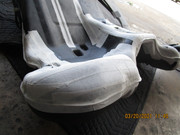
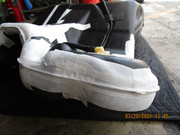

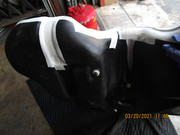
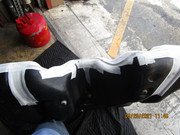

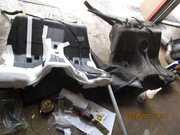




And now, a quick report
I contacted several companies about my cracked fuel tank issue. The places that weld plastic said they can not help me because the inner lining of the tank is a woven fiber, PEG poly ethylene glycol , iirc
So plastic welding was out of the question I guess. I don't know enough about working with these plastics to take that kind of chance.
After some searching I found a place that claims 100% success or your money back for patching these kind of fuel tanks.
These guys:
https://tbbonding.com/
I read far enough to understand that what they claim is indeed possible, especially when it comes to plastics where carbon is involved in any chain reaction. So Immediately I thought that the patch they sell could be used as reinforcement to prevent my new tank from cracking.
Not So fast! They told me their patches don't add any reinforcement, really (how can that be though?) And are for just fixing the crack, it won't work as a preventative measure. Personally I still think it would add SOME support but the reality is the company's engineers have really thought this through and come to several conclusions which make the patch non-ideal to sell for the sake of support. For starters they are very expensive per unit area, a patch for 3"x12" is almost $100. So imagine trying to coat a fuel tank in the stuff, it would cost a fortune. No reputable company would suggest that when sports tape adds MORE support and is far cheaper. I believe the patch intended affect to make covalent bonds as continuously as possible to cover the surface where the crack is, which of course is water or fuel tight. And being so specific to make sure those bonds form properly even under the most negligence of use (as any good engineer would design their products of course) conditions probably means sacrificing some strength of the material in the directions that typically cause cracks in the first place, at least it would be negligible or impractical when compared with sports tape whose job doesn't depend on making water tight seals in a continuous layer around some crack which has already formed.
They went on to tell me, instead of using their patch material, to use sports tape. Yes, from Walmart. That white tape you see is like $5 from walmart. Incredulous
The sports tape adds support and will prevent cracking. I believe it because by applying statics and mechanics of materials by studying the forces we can clearly see the forces involved are helpful when the tape is directly bonded to the surface of the fuel tank as it will resist the spreading apart nature of the sort of crack that I see forming. The similar type of spreading 'crack' in a fuel line as it appears longitudinally most frequently because longitudinal forces from within the radius of fuel lines are twice as strong in the longitudinal direction than they are circumferential or around the hose. It is clear that the internal pressure forces due to the weight of fuel must be additional to those stresses caused by changing velocity of the vehicle in all directions. In other words, going over a sharp bump in the road changes the vertical velocity component of the entire vehicle which means those straps or parts of the chassis have to apply force to the fuel tank. Imagine the vehicle jostling over a very rocky road and slamming around the fuel tank while fuel also bears down from within. The pressure is clearly more than it can stand and the atoms parts ways into a slice, like a knife cut down a hose lengthwise
I am sure I did not use enough adhesive to cover every single spot as would be optimal perhaps, but I think there is enough of it spread out evenly to be helpful in resisting the forces which attempt to pull apart the atoms. It can do this because using their adhesives, sprays, "poly prep" and pre warming the tank and applying their special adhesives, and finishing spray etc.. (will detail below this) That the sports tape will strongly adhere and help hold the fuel tank together as it bonds very tightly to the tape using their procedure.
And it does. Actually their glue bonds to everything that it touches it seems. My fingers felt like they turned to rocks. It wore off after about 2 hours, it just crumbles into dust if you keep rubbing at it. I wasn't too worried because it smelled very strongly of super glue so I treated it accordingly. Yes I used gloves, just a little touch to the glue and they ripped to shreds. The gloves didn't stand a chance and within a short time I had gone through 10 pairs and that glue stuff was everywhere, some is still in my hair and I'm pretty sure the fumes are very toxic, its not a laughing matter even though glue jokes are extremely comical by design... what I am saying is get very good ventilation and wear a mask and be safe with all chemicals
Here was their outlined procedure:
Quote:
A Tech-Patch is not really a reinforcer. What you can use to reinforce the tank where it is not cracked is sports tape (available from Walmart), as follows.
Clean the area
Saturate the area with the Poly Prep. Let dry.
Warm the area.
Apply beads of adhesive to the area of concern.
Press on the sports tape.
Use glue squeegee from the center outward to press down the sports tape
Apply more adhesive over the entire area, making SURE to get adhesive to the edges.
Spray the Activator/Accelerator
This technique adds surface area, increasing the stability. Please let me know if you have any questions.
|
I followed this but with one small difference, I used the heat gun constantly during the adhesive process, to make sure the tank kept warming as I moved along. Because if you warm one area and apply tape everywhere else gets cool. So I just kept heating, sticking tape, squeegee tape, re-heating, etc.... the entire time as I went along.
Once the tape was all glued into place (I just guessed where I thought it would need support. Turns out I was on the money when I saw the crack in my other tank finally thanks to the picture provided earlier in the thread) I also sprayed some rubberized undercoating on the car AND on the tank straps to keep the metal from the straps and car chassis from rubbing onto the tank directly. If you look carefully in some of the pictures you can see the black goop, that is rubber undercoating. I could see rust spots where the straps are in contact with the tank and that can't be good for it, those stiff metal straps probably contribute to the vibrations and stress that causes cracking. Whether the tank is weak in that area or flawed by design doesn't change the fact that the tape will support the solid form of the fuel tank and help keep a crack from forming anywhere. I am not sure if it can help with the seam around the tank, however. There is still a potential for a leaking seam even with the tape, I am tempted to believe. Because how can the tape prevent a degradation of the materials? I suppose it might prevent loss of materials which would help with atoms "falling off" the fuel tank over time, weakening or thinning its layers. Eventually, anything exposed to outside weather will erode and deteriorate, so this there is still some improvement with the tape as an additional layer. Now the tape is eroding instead of the fuel tank in those places, from the outside.
So now the straps have the sports tape area, and the rubberized coating between them and the tank.
I didn't try to use rubber strap sleeves because it seems like the fuel strap is already sort of stretched to the max limit when fully in place, as intended by the factory to be used without rubber insert.
And it came out great, I think. I am very happy now just to have a tank that doesn't leak and might not crack... will update as needed if anything happens! good luck!
I'm also going to repair the old tank, and basically do the same thing after I fix the crack properly.
I pressure test the tank before doing anything to make sure there are no other holes I Might miss. SO just a heads up if you go to do this, pressure test it first just in case you miss something. IF there is already a hole you cant just sports tape over it, that wont seal the hole, you need the patch first.
Not sure when I'm going to do it But when I do I Will update those results as well, and hopefully have a spare fuel tank all set ready to go for whatever car comes next, or whatever, maybe I'll flip it over add some legs and use it as a table or fish tank or something